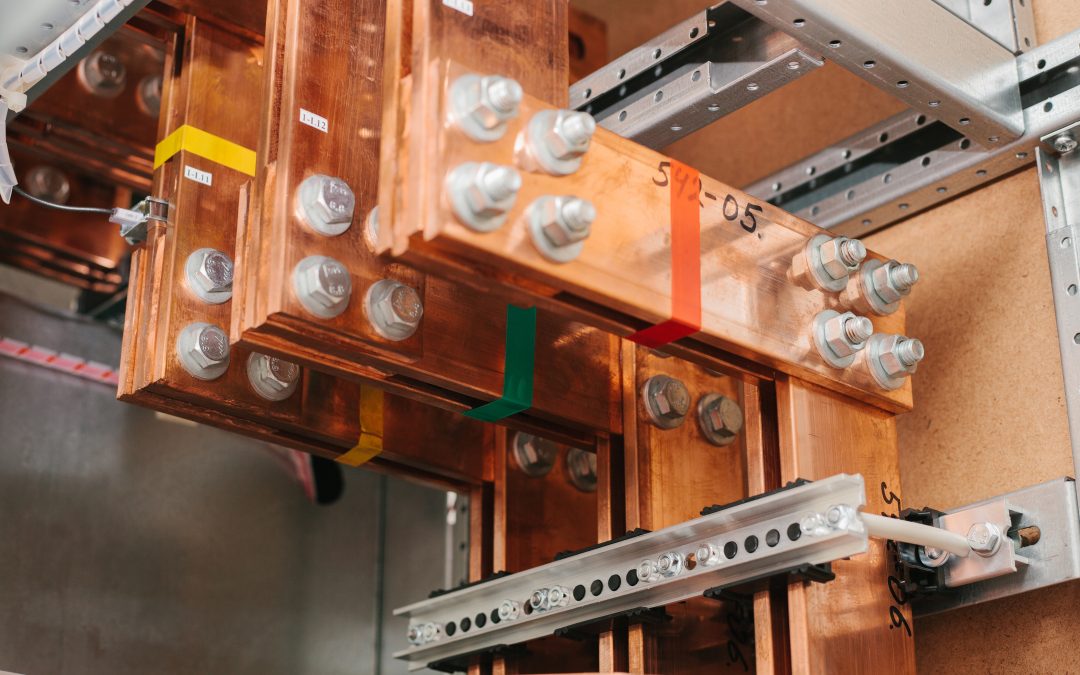Electrical systems are the backbone of modern infrastructure, ensuring the reliable distribution of power to homes, businesses, and industries. One critical component within these systems is the busbar. But what is a busbar, and why is it so important? In this comprehensive article, we will explore the fundamental aspects of busbars and delve into ten compelling reasons why they are crucial in electrical systems. We’ll also provide a conclusion summarising their importance and address some frequently asked questions to clarify common queries about busbars.
What is a Busbar? An Introduction
A busbar is a metallic strip or bar that conducts electricity within an electrical distribution system. Typically made of copper, aluminium, or brass due to their excellent conductive properties, busbars serve as central hubs that distribute power to various circuits, equipment, and devices. They are a key component in substations, switchgear, and distribution boards, ensuring that electricity flows efficiently and safely from the source to the load.
What is a Busbar: Types of Busbars
There are several types of busbars, each designed for specific applications and environments. The most common types include:
- Single Busbar: A basic form used in simple and smaller systems where the reliability requirements are not very high.
- Double Busbar: Offers redundancy and increased reliability, allowing for maintenance without interrupting power.
- Main and Transfer Busbar: Used in complex systems for operational flexibility, enabling the transfer of loads between different busbars without disruption.
- Insulated and NonInsulated Busbars: Depending on the application, busbars may be insulated to prevent accidental contact or non insulated where protection is provided by the enclosure.
Efficiency and Reliability of Busbars
One of the primary reasons busbars are crucial in electrical systems is their ability to enhance efficiency and reliability. By providing a low resistance path for the flow of electricity, busbars minimise energy losses that occur due to resistance in wires and connections. This efficiency translates into reduced power consumption and lower operational costs. Additionally, their robust construction and ability to handle high current loads contribute to the overall reliability of the electrical system.
SpaceSaving Design of Bus Bars
Busbars are designed to maximise the use of space within electrical panels and distribution boards. Unlike cables, which can be bulky and difficult to manage, busbars offer a compact and organised solution for power distribution. Their flat or rectangular shape allows for easy stacking and layering, enabling engineers to design more compact and efficient electrical systems. This space saving design is particularly valuable in applications where space is limited, such as in industrial plants or commercial buildings.
Enhanced Safety with Busbars
Safety is paramount in any electrical system, and busbars play a crucial role in ensuring safe operations. The solid and rigid construction of busbars reduces the risk of electrical faults, such as short circuits and ground faults, which can occur due to loose or damaged wires. Moreover, busbars can be easily insulated and enclosed within protective housings, further minimising the risk of accidental contact and electrical hazards. This enhanced safety is particularly important in high voltage applications where the consequences of electrical faults can be severe.
High CurrentCarrying Capacity of Busbars
Busbars are designed to handle high current loads, making them ideal for applications that require the distribution of large amounts of electrical power. The conductive materials used in busbars, such as copper and aluminium, have low resistance and high thermal conductivity, allowing them to carry substantial current without overheating. This high current carrying capacity is essential in industrial settings, power generation facilities, and data centres, where the demand for electricity is significant.
What is a Busbar: Flexibility and Scalability of Busbars
Electrical systems need to be adaptable to changing requirements, and busbars offer the flexibility and scalability needed to meet these demands. Busbars can be easily modified, extended, or reconfigured to accommodate new equipment, changes in load, or system upgrades. This adaptability is particularly beneficial in dynamic environments where the electrical needs are constantly evolving. For instance, in data centres, the ability to quickly and efficiently reconfigure the power distribution system is essential to support growing data processing and storage needs.
Reduced Installation and Maintenance Time with Busbars
The installation and maintenance of busbars are generally quicker and more straightforward compared to traditional cabling systems. Busbars can be prefabricated to specific lengths and configurations, reducing the time and effort required for onsite installation. Their rigid structure also simplifies connections and reduces the need for complex routing and securing of cables. Additionally, the accessibility and visibility of busbars within enclosures make routine inspections and maintenance tasks more efficient, helping to minimise downtime and operational disruptions.
Improved Thermal Management with Busbars
Effective thermal management is critical in electrical systems to prevent overheating and ensure reliable operation. Busbars are designed to dissipate heat efficiently due to their large surface area and conductive materials. This improved thermal management helps maintain optimal operating temperatures, reducing the risk of thermal damage and extending the lifespan of electrical components. In high power applications, such as power distribution units and switchgear, effective heat dissipation provided by busbars is essential to ensure safe and continuous operation.
CostEffectiveness of Busbars
While the initial cost of busbars may be higher than traditional wiring, their longterm benefits often result in significant cost savings. The efficiency, reliability, and reduced maintenance requirements of busbars contribute to lower operational costs over the lifetime of the electrical system. Additionally, the scalability and ease of modification offered by busbars can reduce the need for costly system upgrades and reconfigurations. Overall, the cost effectiveness of busbars makes them a smart investment for a wide range of electrical applications.
Conclusion
What is a Busbar:In conclusion, busbars are a fundamental component in modern electrical systems, offering numerous advantages that contribute to their widespread use and importance. From enhancing efficiency and reliability to improving safety and thermal management, busbars play a crucial role in ensuring the smooth and reliable distribution of electrical power. Their space saving design, high current carrying capacity, and flexibility make them indispensable in a variety of applications, from industrial facilities to commercial buildings and data centres. As technology continues to advance and the demand for electricity grows, the importance of busbars in electrical systems will only increase.
FAQs
1. What is a Busbar Made Of?
Busbars are typically made of highly conductive materials such as copper, aluminium, or brass. Copper is preferred for its excellent conductivity and thermal properties, while aluminium is chosen for its lighter weight and cost effectiveness.
2. How Do Busbars Enhance the Safety of Electrical Systems?
Busbars enhance safety by providing a rigid and secure path for electrical current, reducing the risk of loose or damaged connections that can lead to electrical faults. They can also be insulated and enclosed within protective housings to prevent accidental contact and electrical hazards.
3. What is a Busbar Used For in HighVoltage and LowVoltage Applications?
Busbars are versatile and can be used in both high voltage and low voltage applications. Their design and construction can be tailored to meet the specific requirements of different voltage levels, ensuring safe and efficient power distribution.
4. What is a Busbar’s Advantage Over Traditional Wiring?
Busbars offer several advantages over traditional wiring, including higher current carrying capacity, better thermal management, reduced installation and maintenance time, and improved space utilisation. They also provide greater flexibility and scalability for future modifications and upgrades.
5. What is a Busbar’s Role in Improving the Efficiency of Electrical Systems?
Busbars contribute to the efficiency of electrical systems by minimising energy losses due to resistance, providing a low resistance path for the flow of electricity. This efficiency translates into reduced power consumption and lower operational costs, making busbars a cost effective solution for power distribution.
Also read: Urban Regeneration Company: 10 Benefits of Green Spaces in Cities





